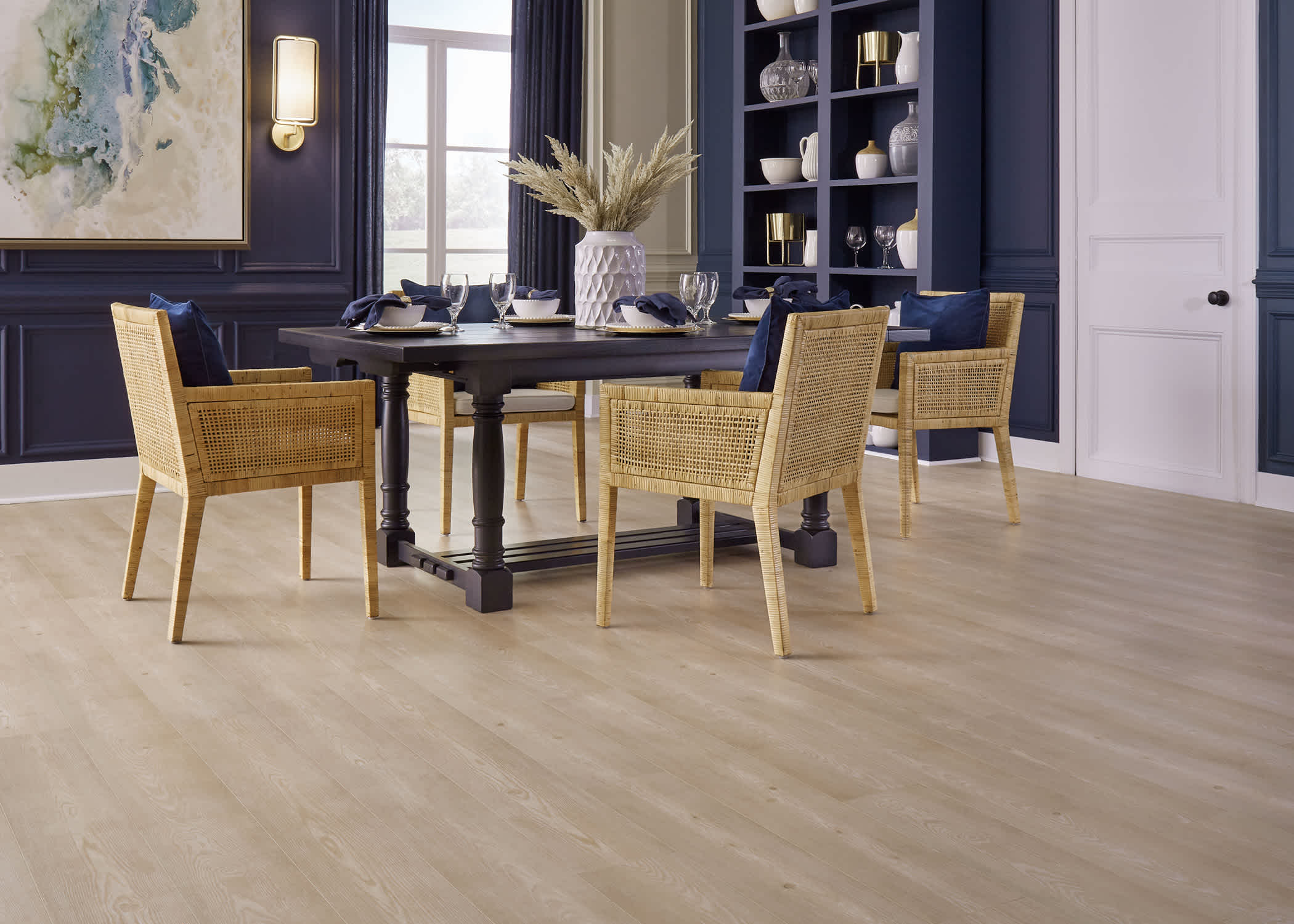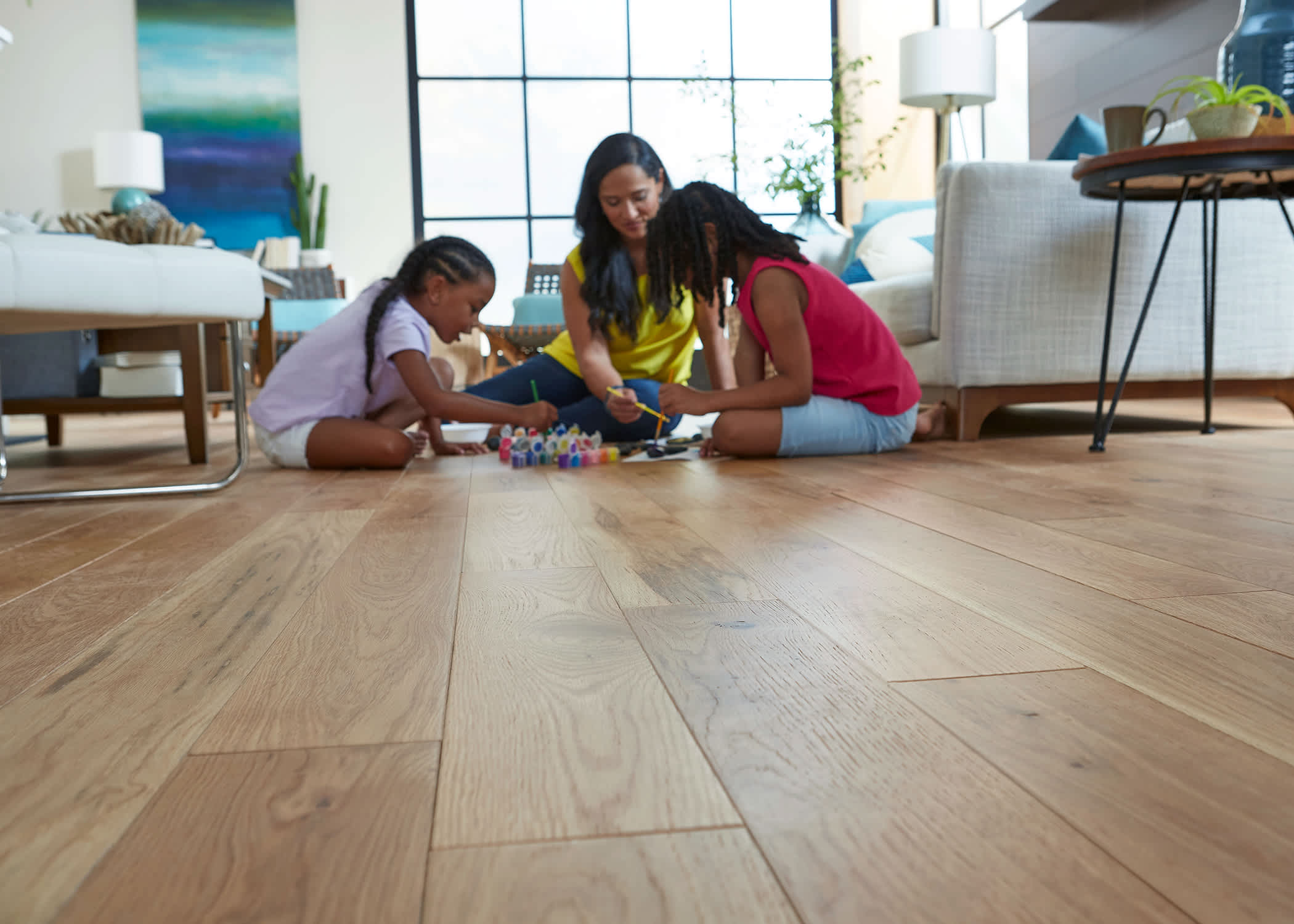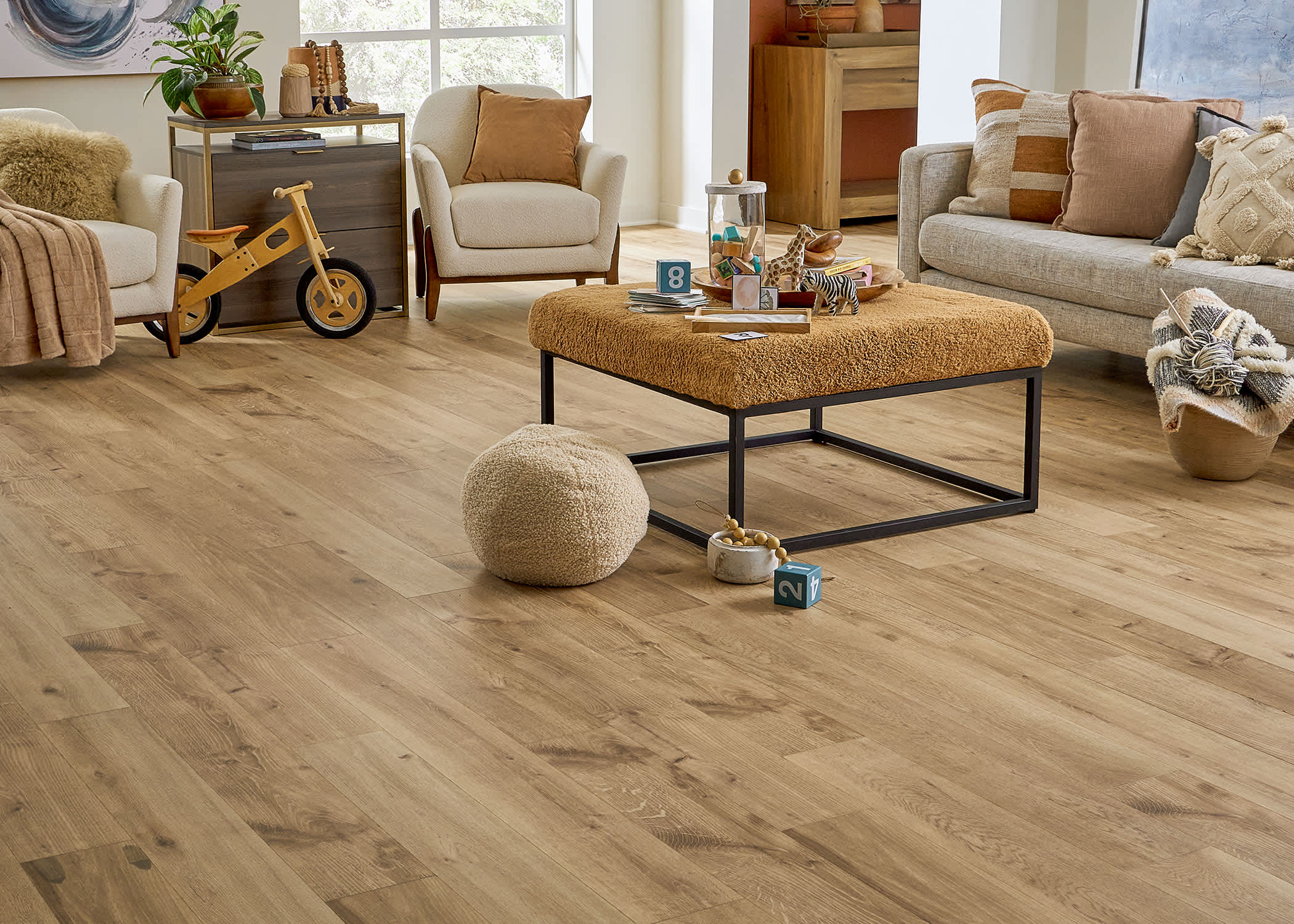Dining Room Floors Inspiration
Find Your Dining Room Flooring Style
Your dining room is arguably one of the most important rooms in your home. It's a central place for gathering, and where you share meals and time with family and friends. The right flooring option is the one that complements your lifestyle and allows your personality to shine through. Wood flooring is a popular option for dining rooms, thanks to the feel of elegance and tradition that it can bring to a space. However, many types of flooring can replicate the look of wood, so it's also worth considering a laminate, tile, or vinyl floor. These are all high-performance options that could give you the appeal of hardwood but with different benefits.
Once you've narrowed down your options, it's time to think about details—such as the width of your floor planks. Narrow planks can look more traditional and complement a classic design to your room; wide planks can provide a contemporary look while creating an additional feeling of space in a room. For extra design impact, you may be thinking about incorporating a pattern using hardwood or laminate in a chevron design. Consider whether you want the same floors throughout the whole upstairs of your home or if you'd prefer to differentiate between spaces. With colors in a wide spectrum from white-gray to dark chocolate brown, and finishes ranging from smooth, low-gloss Scandinavian planks to textured weathered barn wood, you'll find the ideal floor to suit no matter what your design scheme.
Considerations for Your Dining Room Flooring
While you're shopping for dining room floors, it's essential to consider your lifestyle and budget. How often you eat at your table? That may influence how much you're willing to invest in your dining room décor. Some people don't use their dining rooms often—perhaps it's a formal space where style and enhancing the feel of the room is their priority. For others, their dining room is a gathering place for the whole family, used every evening for sharing, relaxation, or even play with kids and pets.
It's also worth considering the aesthetic you want for your dining room and how your floors will fit into your lifestyle. If you have younger children or pets, it would be worthwhile considering our more hard-wearing flooring choices. Vinyl flooring and tile flooring are both hardwearing options that should be able to withstand the demands of even the most active family space.
Installing Your Dining Room Flooring
Each type of flooring has its own needs and process for installation. Before committing to your flooring, look into what installation method the manufacturer recommends and prepare accordingly. Prior to installation, you'll want to prepare your subfloor and perhaps test it for moisture. You may also need to prepare your flooring by acclimating it to its new environment.
It's worth thinking about whether you're going to install the flooring on your own or with the help of a professional—that may determine what installation type you choose. If you plan to install your flooring yourself or need a speedy solution, then we recommend choosing a DIY-friendly option such as vinyl or laminate. Vinyl flooring is relatively simple to install. There are three different installation methods: click-lock (or floating), glue down, and peel-and-stick. We recommend installing an underlayment first to help protect your flooring's joints. Laminate floors are similarly DIY-friendly. There are a few different methods—glue, glue-less, rotate-and-click, horizontal insertion, and slide-and-click—but none require prior experience.
If you have a little more time or are planning to hire a professional to install your floors (or have the expertise to handle the project yourself) then you might want to consider wood or tile flooring. Once tile flooring is laid, it's an easy maintenance option that could last for years. Both solid and engineered hardwood floors need a higher level of skill to install, so we recommend leaving this job to the professionals. Fortunately, we can offer the services of our Professional Independent Contractors to help make this part of your flooring journey easier.






